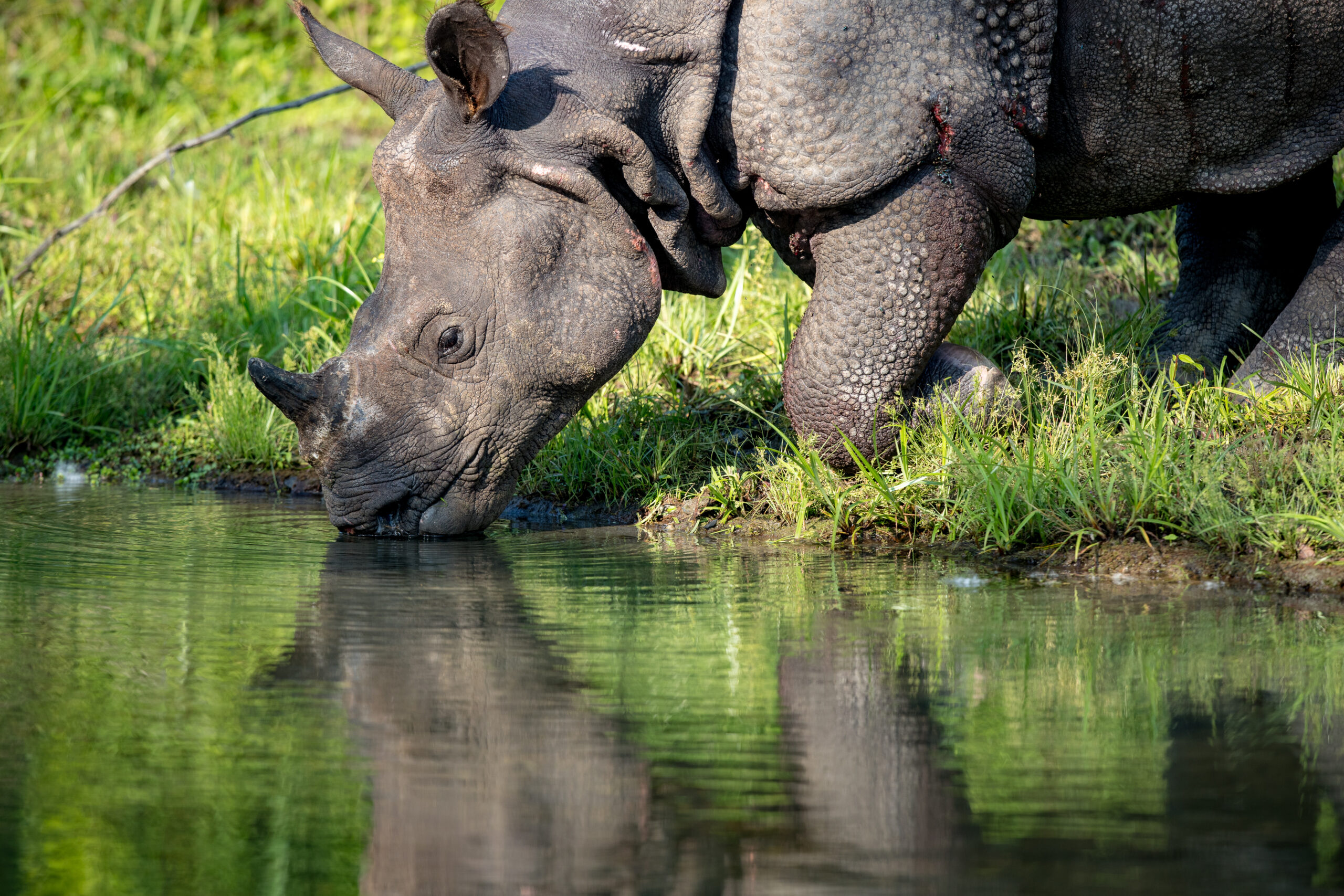How Plastic Pollution is Harming Rhinos


From the Great Pacific Garbage Patch to local landfills and littered pollution, it is no secret that plastic pollution is a known threat to wildlife across the globe, both on land and in the sea. Recent findings in Chitwan National Park in Nepal have highlighted a troubling trend that may threaten the greater one-horned rhino population (Awasthi et al. Plastic ingestion by greater one-horned rhinos in Nepal: An emerging conservation threat).
During a study on seed dispersal by rhinos, Awasthi and his colleagues encountered dung piles, or latrines, that had visible pieces of plastic in them. An unusual sight, they began collecting the data of these dung piles that contained macroplastics, which are visible pieces of plastics, and continued to do so for three years, from 2020-2022. Of the 258 dung samples that were analyzed,10% contained visible pieces of plastic in them. The pieces of plastic in the dung included coca cola bottle tops, plastic bags, snack wrappers, rubber bands, shampoo packets and even several plastic balls.
Ingestion of plastic can cause multiple health problems in animals, such as blockages and poisonings. Rhinos in particular have a very sensitive and delicate gastrointestinal system that is complex in nature and can therefore make them more vulnerable to the adverse effects of ingesting plastic waste. Unlike other large herbivores such as elephants who target garbage piles as a source to forage in, it seems that rhinos are inadvertently ingesting the plastic due to its ubiquitous presence in their habitat. Fortunately, no rhino deaths have been linked to plastic ingestion but the study noted that 10% of rhino mortality in the Park is unexplained and it is imperative that humans try to mitigate and reduce the presence of plastic pollution in order to help rhinos thrive in the wild. Of all the various pressures facing rhinos – poaching, habitat loss and fragmentation – plastic pollution should be one we can easily control.
How you can help
The study concluded that a comprehensive waste management strategy within all rhino habitats and rivers that flow through them is needed in order to prevent the continued ingestion of plastic by rhinos.
While many IRF supporters and donors do not live near rhino habitats, we can still positively impact wildlife and their habitats by taking steps locally.
Here are three steps you can take today to help:
- Avoid single use or unnecessary plastic such as plastic cutlery and plastic straws, and opt for reusable replacements if possible. Reducing our use of single-use plastics is the best way to prevent them from ending up in natural environments.
- Leave no trace. When visiting wildlife areas such as parks or beaches make sure to pack up all your belongings and properly dispose of any trash to help protect the natural landscape.
- Sign up to do an area or beach clean up! Help your local wildlife by cleaning up plastic waste and debris that may be in your community. CleanUps.Org is a great resource with global postings of cleanups. https://www.cleanups.org/
